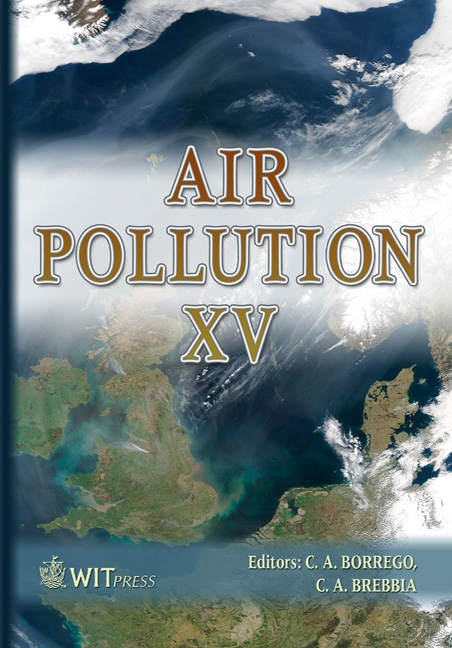Air Pollution And Child Respiratory Diseases: The Viseu Case Study, Portugal
Price
Free (open access)
Transaction
Volume
101
Pages
10
Published
2007
Size
1,002 kb
Paper DOI
10.2495/AIR070021
Copyright
WIT Press
Author(s)
C. Borrego, M. Lopes, J. Valente, J. Santos, T. Nunes, H. Martins, A. I. Miranda & N. Neuparth
Abstract
An urban area of inland Portugal, without severe air pollution problems as yet, was selected for this work, based on the fact that future development could lead to air quality degradation. To evaluate the influence of air pollution on 6 to 10 years old asthmatic children, environment and medical parameters were monitored. Children were selected based on the school health questionnaire validated and widely applied by the ISAAC project (International Study of Asthma and Allergies in Childhood) and submitted to medical tests at the hospital. At the same time, several field campaigns were realised to characterize the outdoor and indoor air quality of the study area in different seasons (winter and summer time). Measured parameters included meteorological data and ambient air concentrations of ozone (O3), nitrogen oxide (NO), nitrogen dioxide (NO2), carbon monoxide (CO), sulphur dioxide (SO2), benzene, toluene, ethylbenzene and xylene (BTEX), measured continuously (3 mobile labs) and using diffusive tubes (indoor and outdoor), and also particulate matter (PM10 and PM2.5), using high volume and low volume samplers. Preliminary results have shown that, although the study area has no air pollution problems as yet, high levels of some pollutants, like particulate matter, could be registered, especially at night. To understand the influence of dispersion conditions on air quality, mesoscale and local scale models were applied and validated with field campaign data. Keywords: air pollution, respiratory diseases, exposure.
Keywords
air pollution, respiratory diseases, exposure.





